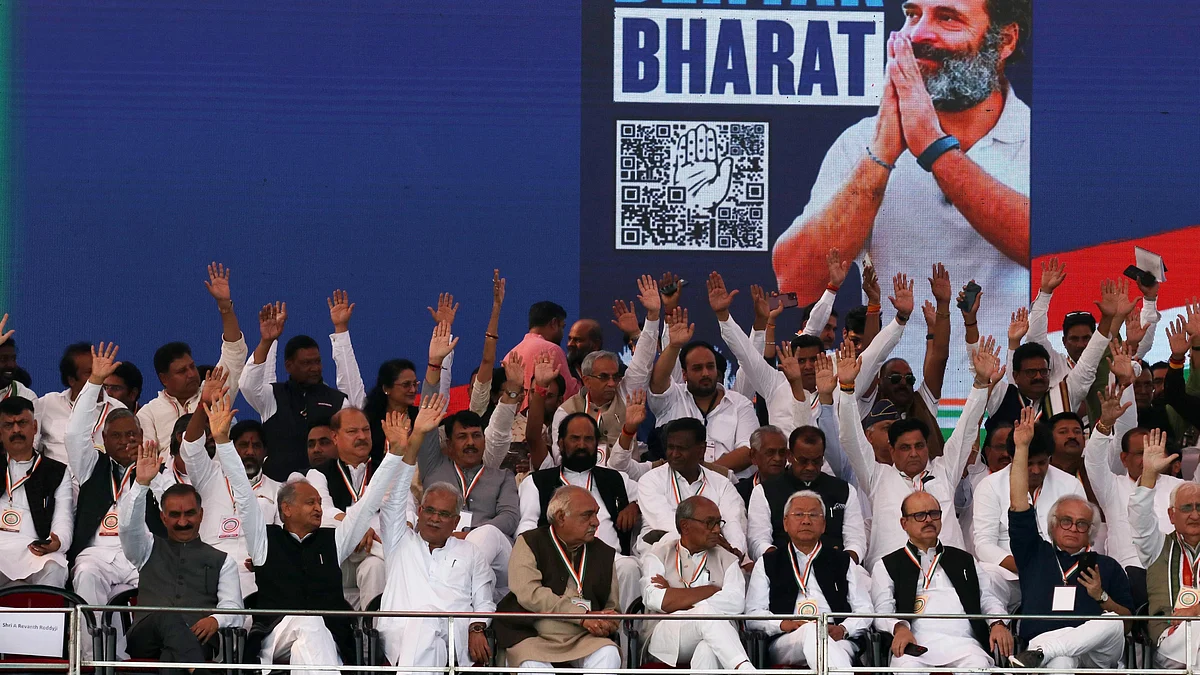The Battle for India, v. 2024
The Nagpur mega rally for the Congress 139th Foundation Day was also the beginning of a campaign to win the people of Bharat over to a vision of freedom and equality—again

It is quite apt and poignant too that the Indian National Congress should choose Nagpur to launch India’s second freedom movement on 28 December.
It was in December 1920 that its Nagpur session gave the freedom movement a decisive turn, endorsing Mahatma Gandhi’s bid for poorna swaraj or complete self-governance over Tilak’s swaraj through accommodation with the British. It called for the inclusion of Muslims in the struggle for Independence, and for its members to give up all trade activities with the British, as well as any titles conferred upon them.
It was at this historic session that the staunchest devotee of Tilak, K.B. Hedgewar, a member of the Congress Seva Dal, broke away from the party as he did not agree with the inclusive and secular politics of Mahatma Gandhi and Jawaharlal Nehru.
Five years later, Hedgewar set up the Rashtriya Swayamsevak Sangh. Few people know that he struggled to find a name that would be akin to the Congress Seva Dal’s and that he built the RSS cadres on copycat lines.
It is quite a different matter that almost a century later, the original Seva Dal has retreated even as its imitation rules the roost in the nation.
To set up the RSS headquarters in Nagpur rather than in Tilak’s karmabhoomi Pune, where most of the grand old party's other ideologues also hailed from, was another way for Hedgewar to cock a snook at the Congress. Confronting the RSS at its headquarters thus brings the Congress full circle to take on the new challenges facing the country today.
With enough devoted members dedicated to party ideals and Gandhi-ji’s goals, it will hopefully turn the tables.
Nagpur is also the epicentre of a region that was a Congress bastion until very recently. It helped Indira Gandhi sweep Maharashtra by giving her all 11 Lok Sabha seats during her 1980 comeback. When P.V. Narasimha Rao lost his home seat to the BJP in 1984 during a Congress wave, Rajiv Gandhi ran him from Ramtek, the temple town in Nagpur district, and saved the dignity of the future prime minister.
Before the 2004 elections, when Sonia Gandhi held a rally at Kasturchand Park—the largest ground available in Nagpur for such events—the crowds spilled over into adjoining roads, causing such a traffic jam that BJP leader L.K. Advani, who was slated to address a rally at the same venue, cancelled it out of fright that his crowds would be thinner, thereby denting public perception of the RSS–BJP’s popularity.
And now, here is Rahul Gandhi, as antithetical to Mohan Bhagwat as Gandhi-ji was to Hedgewar, thumbing his nose at the RSS on their stomping grounds.
So, is the Congress ready to take back both former bastion and nation from the BJP?
Looks very much like it.
Follow us on: Facebook, Twitter, Google News, Instagram
Join our official telegram channel (@nationalherald) and stay updated with the latest headlines
